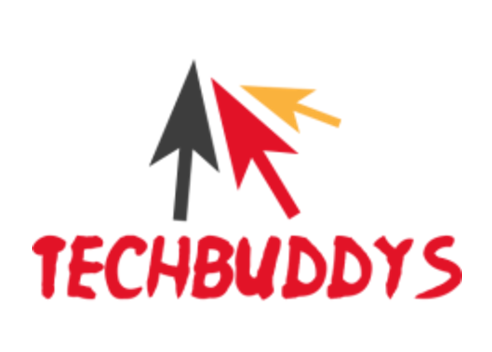“802 бизнес идеи в россии на 2021 год” (802 business ideas in Russia for 2021) represents a comprehensive collection of entrepreneurial opportunities that emerged in Russia’s dynamic business landscape.
This extensive catalog reflects the significant transformation of Russia’s business environment, where both traditional sectors and innovative digital ventures found their place.
The year 2021 marked a period of adaptation and recovery, with entrepreneurs actively seeking niches that aligned with changing market needs and consumer behaviors.
The entrepreneurial activity index showed that approximately 12% of Russians were engaged in business activities during this period, while the small and medium enterprise sector demonstrated resilience despite challenging conditions.
The collection encompasses various sectors, from digital transformation initiatives to eco-friendly ventures, reflecting the diverse range of possibilities available to aspiring entrepreneurs in the Russian market.
Key Economic Trends in 2021
The Russian economy in 2021 demonstrated remarkable resilience and digital transformation amid changing market conditions. The GDP grew by 4.7% compared to 2020, with consumer demand serving as the primary growth driver.
The digital economy made significant strides, with the Internet economy growing 15-20% annually from 2016-2019, contributing 6.4 trillion rubles to GDP through advertising, e-commerce, infrastructure, and digital content.
The government’s Digital Economy Program, backed by a 1.6 trillion ruble budget, emerged as a cornerstone initiative for technological advancement.
The e-commerce sector experienced substantial growth, with the market reaching 5.7 trillion rubles and 2.8 billion orders in 2022. Small and medium enterprises (SMEs) received substantial support through the National SME Project, which allocated 427.6 billion rubles for development programs.
The digital transformation of SMEs became particularly crucial, with businesses investing approximately 10% of their revenue in digital technologies to improve efficiency and market competitiveness.
Consumer behavior showed a marked shift toward sustainability and eco-friendly products. About 61% of Russian consumers now expect brands to demonstrate social responsibility.
The retail, e-commerce, ecosystem IT companies, telecom, and fintech sectors remained the most active in ESG development, despite global challenges. Environmental consciousness among consumers has grown, with 75% of respondents preferring to purchase more energy-efficient items even at higher costs.
The government’s new low-carbon development strategy, aiming for a 70% reduction in net emissions by 2050, has set a clear direction for sustainable economic growth.
Prominent Business Sectors
Technology and Digital Innovation
The Russian tech sector has shown remarkable growth, with the Internet economy contributing 6.4 trillion rubles to GDP through digital services, infrastructure, and content. The government’s Digital Economy Program, supported by a 1.6 trillion ruble budget, has created opportunities for IT consulting and software development ventures.
E-commerce Evolution
The e-commerce market reached 5.7 trillion rubles with 2.8 billion orders, showing an 80% year-over-year increase. Online retail has become particularly strong in clothing and shoes (40% of sales), sporting goods, and groceries. Major platforms like Wildberries and Ozon lead the market, with mobile app downloads reaching 9 million in just eight months.
Health and Wellness Boom
The health and wellness sector has experienced significant growth, with organic food sales increasing from $59.15 billion in 2021 to $61.67 billion in 2022. Telemedicine services have expanded rapidly, with over six million remote consultations conducted in 2023. The market shows particular strength in reduced sugar beverages and natural health products.
Eco-Friendly Initiatives
Environmental consciousness has risen significantly, with 61% of Russian consumers expecting brands to demonstrate social responsibility. The sustainable food market has seen notable growth, driven by increasing demand for organic produce and environmentally friendly packaging. Companies like Air Protein are pioneering innovative sustainable food technologies.
Food Delivery Services
The food delivery market is projected to reach $12.66 billion by 2029. Delivery Club dominates with 55% market share. The sector has evolved beyond traditional restaurant delivery to include grocery delivery, meal kits, and specialized dietary options. The rise of dark kitchens and integration with major ecosystems has transformed the industry’s operational model.
Low-Investment Business Ideas
The landscape of low-investment business opportunities has expanded significantly in 2025. Freelancing platforms like Upwork and Fiverr are experiencing remarkable growth, with Upwork hosting over 18 million registered freelancers and Fiverr processing more than 3 million jobs annually across 196 countries.
The average freelancer earns $21 per hour, with specialized professionals in tech and marketing earning up to $28 per hour. Dropshipping has emerged as another lucrative option, with success stories like Irwin Dominguez generating $1 million in just 8 months.
The handmade products market is equally promising, projected to reach $2,397.15 billion by 2032 with a CAGR of 10.15%. E-commerce platforms have revolutionized this sector, with 60% of handmade sales now occurring online.
These business models offer flexibility and scalability while requiring minimal upfront investment, making them particularly attractive for aspiring entrepreneurs.
Regional and Rural Business Opportunities
The regional business landscape shows remarkable growth potential across multiple sectors. Urban farming is projected to reach $281,275 million by 2030, growing at a CAGR of 3.81%, with innovative technologies like hydroponics and vertical farming leading the way.
The local tourism sector is experiencing a surge in cultural immersion experiences, with wellness tourism expected to reach $1.4 trillion by 2027.
Meanwhile, the craft beer market is set to expand from $115.65 billion in 2024 to $270.38 billion by 2032, with regional breweries gaining popularity for their unique, artisanal offerings.
These opportunities are particularly strong in rural areas, where authentic experiences and local production methods create distinctive market advantages.
Read More: Fintechzoom.com Top Stock Gainers Today
Challenges in the Russian Market
The Russian market presents significant operational challenges for businesses. Bureaucratic hurdles remain pervasive, with companies routinely encountering irregular payments and bribes when dealing with tax inspectors and customs officers.
The country’s vast geography and inadequate infrastructure create substantial logistical barriers, with only 5,000 km of new roads constructed between 1995-2008, representing a mere 0.07% increase.
Consumer behavior has transformed dramatically post-pandemic, with 57% of consumers noting economic uncertainty affecting their shopping decisions.
The e-commerce sector has adapted rapidly, reaching 5.7 trillion rubles with 2.8 billion orders, while traditional retail remains dominant. Transportation complexities have intensified, with many maritime carriers suspending operations and increased transit times due to regulatory obstacles.
Companies must also navigate complex certification requirements and product registration processes, which are particularly demanding for newcomers.
Government Support and Incentives
The Russian government has significantly expanded support for entrepreneurs through comprehensive initiatives. The National SME Project allocated 427.6 billion rubles (USD 6.6 billion) for strengthening business frameworks, with 261.8 billion rubles dedicated to improving SME access to finance.
The Digital Economy Program, backed by a 1.6 trillion ruble budget, provides substantial support for technological advancement. In 2024, the government allocated RUB 2.5 billion specifically for IT companies implementing digital transformation projects, offering preferential lending rates between 1-5%.
Small businesses benefit from tax incentives including reduced insurance premium rates, saving entrepreneurs between 385-550 billion rubles, while regional authorities provide additional support through reduced regional tax rates and property benefits.
Conclusion
The Russian market presents diverse opportunities across multiple sectors in 2025, with the e-commerce market projected to reach USD 283.4 billion by 2032, growing at a CAGR of 16.70%. The digital economy continues to expand, supported by the government’s 1.6 trillion ruble program for technological advancement.
Despite economic challenges, including an expected GDP growth of 2.1% in 2025, several sectors show promising growth potential. The food delivery market is projected to reach $10.54 billion, while the consumer electronics sector anticipates a 13.04% annual growth. The agricultural sector receives enhanced government support through targeted subsidies and grants.
For entrepreneurs entering the market, the National SME Project provides comprehensive support with 427.6 billion rubles allocated for business development. The government offers tax incentives including reduced profit tax rates and property tax exemptions.
Success in this market requires understanding evolving consumer preferences, with 61% of Russians prioritizing local businesses and sustainable products. The combination of government support, digital transformation, and changing consumer behavior creates a fertile ground for innovative business ventures.


